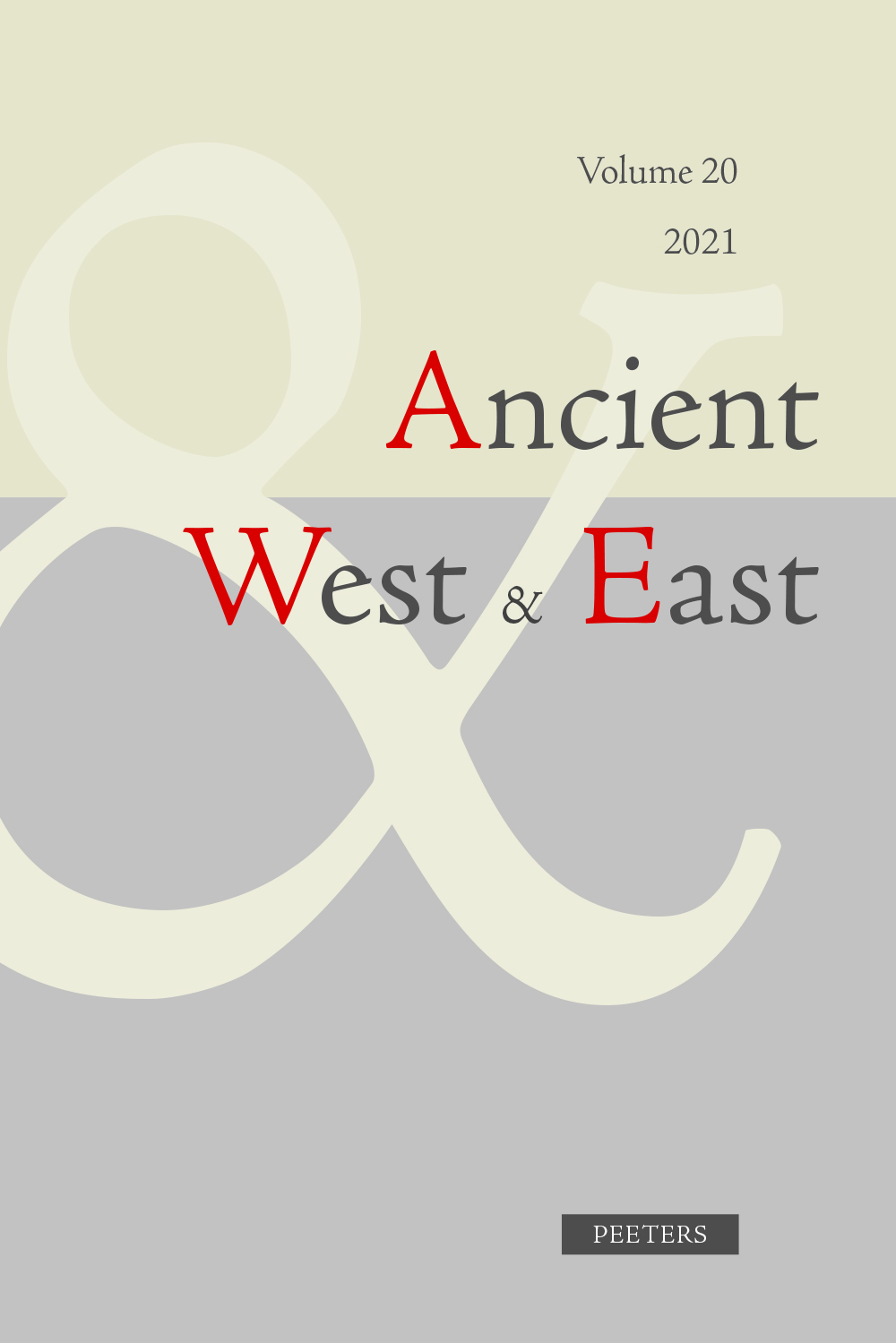 previous article in this issue previous article in this issue | next article in this issue  |

Preview first page |
Document Details : Title: Idiosyncrasies of the Formation Process of the North Caucasian Alan Culture (Based on Archaeological Data) Author(s): ABRAMOVA, M.P. Journal: Ancient West & East Volume: 4 Issue: 1 Date: 2005 Pages: 122-139 DOI: 10.2143/AWE.4.1.3291785 Abstract : The Alan culture of the North Caucasus cannot be interpreted as something stable, associated with a certain set of characteristics and a defined territory. It may be assumed that its establishment was preceded by a long process of development in several stages. The first was the formation of a conglomerate, which included, apart from the local population, certain groups of Iranian-speaking tribes, namely the Sarmatians and the descendants of the Scythians who had been living in the territory in the preceding period. It appears that the appearance of ground-burial complexes with catacomb-type burials throughout the territory of Kabardino-Pyatigore and in the Stavropol upland can be associated with them. These date from the 2nd to the beginning of the 3rd century AD. The latest date for these monuments corresponds to a period of increasing activity by the tribes of the Late Sarmatian culture, which caused massive migrations of the Caucasian people. As a result, new groups of monuments came into existence in other areas of the North Caucasus, above all, groups of burial mounds of the 3rd-4th centuries AD in the Lower Sulak area, left behind by the Sarmatian population, which, in time, included some other ethnic groups as well. Traces of that conglomerate can later be seen in the coastal areas of Dagestan, i.e. in the 4th-5th centuries AD. However, it was an isolated branch, not connected to the main body of tribes in the central areas of the North Caucasus. |
|


